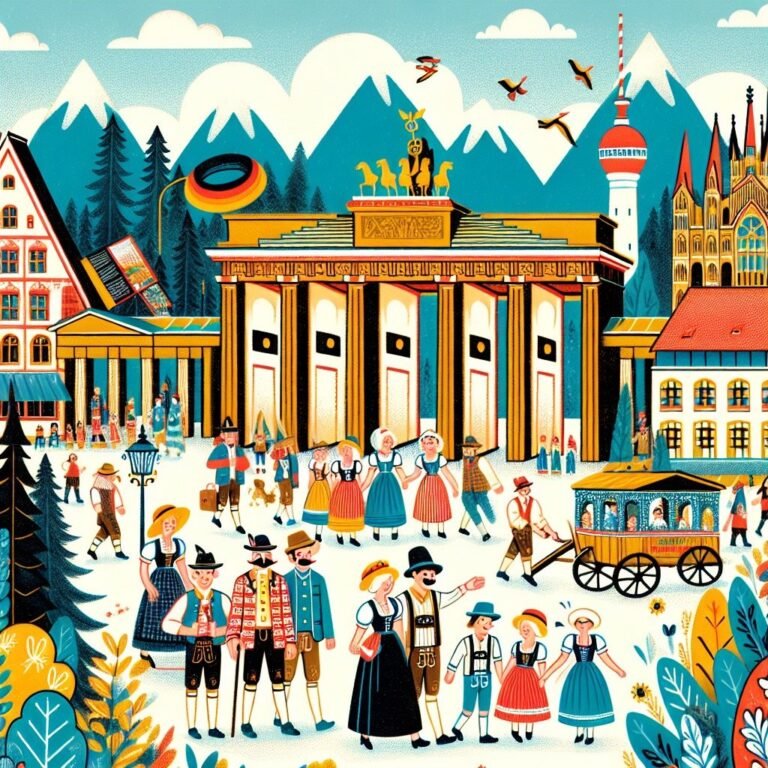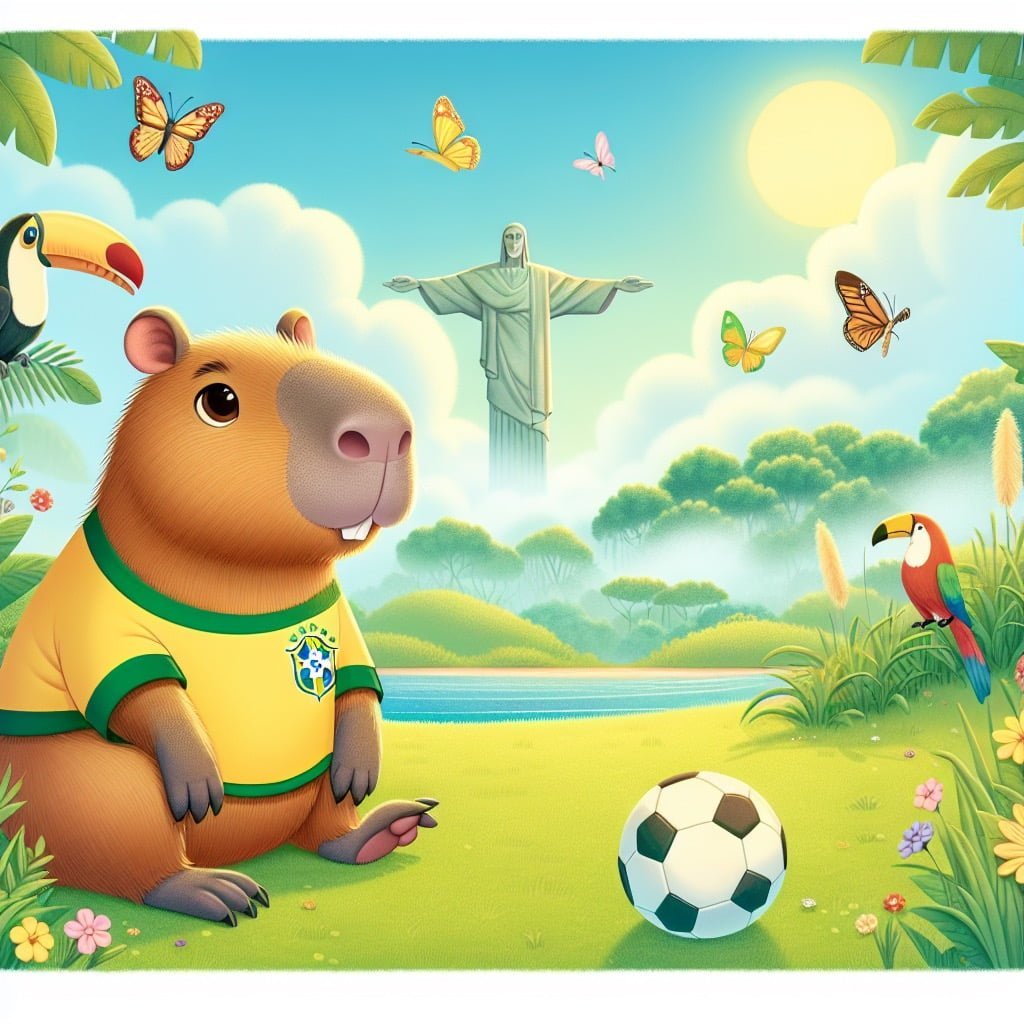Welcome to a fascinating exploration of Germany Facts For Kids! From the impressive size of Berlin to the rich history of German breweries, there is so much to discover about this vibrant country. Join us on a journey through fun and educational tidbits that will spark your curiosity and ignite your sense of wonder. Let’s dive into the world of Germany and uncover the captivating facts that make this country truly special. Whether you’re a young explorer or a seasoned adventurer, there’s something for everyone to enjoy in the fascinating world of Germany. So, buckle up and get ready for an exciting and enlightening ride through the wonders of Germany!
Germany Facts For Kids
1. Berlin is 9 Times Bigger Than Paris

For younger kids: Berlin is a super big city with lots of cool stuff!
For older kids: Berlin covers an area of about 344 square miles, making it nine times bigger than Paris, France. It’s a vibrant city with a rich history and diverse cultural scene.
Detailed explanation:Berlin, the capital city of Germany, is significantly larger in terms of land area compared to Paris, the capital city of France. In fact, Berlin is approximately 9 times bigger than Paris. This size difference can be attributed to a variety of factors, including historical development, urban planning, and population growth.
One of the main reasons for Berlin’s size advantage over Paris is its history of division and reunification. During the Cold War, Berlin was divided into East and West Berlin, resulting in a larger overall land area for the city. Even after reunification in 1990, Berlin remained a sprawling metropolis with plenty of room for expansion and development.
Additionally, urban planning in Germany tends to prioritize space and efficiency, leading to larger city layouts compared to those in other countries. This emphasis on urban sprawl has allowed Berlin to grow and expand over the years, resulting in its current status as one of the largest cities in Europe.
Furthermore, Germany’s population density is lower than that of France, meaning that there is more room for cities like Berlin to spread out and accommodate a larger land area. This lower population density also contributes to the overall size of Berlin compared to Paris.
In conclusion, the fact that Berlin is 9 times bigger than Paris can be attributed to a combination of historical, cultural, and geographical factors. This size difference highlights the unique characteristics of each city and provides insight into the differences in urban planning and development between Germany and France. Overall, Berlin’s size serves as a fascinating example of the diverse range of Germany Facts For Kids that make up the country’s rich cultural and historical heritage.
Germany Facts For Kids
2. Germany is Home to the Oldest Brewery in the World
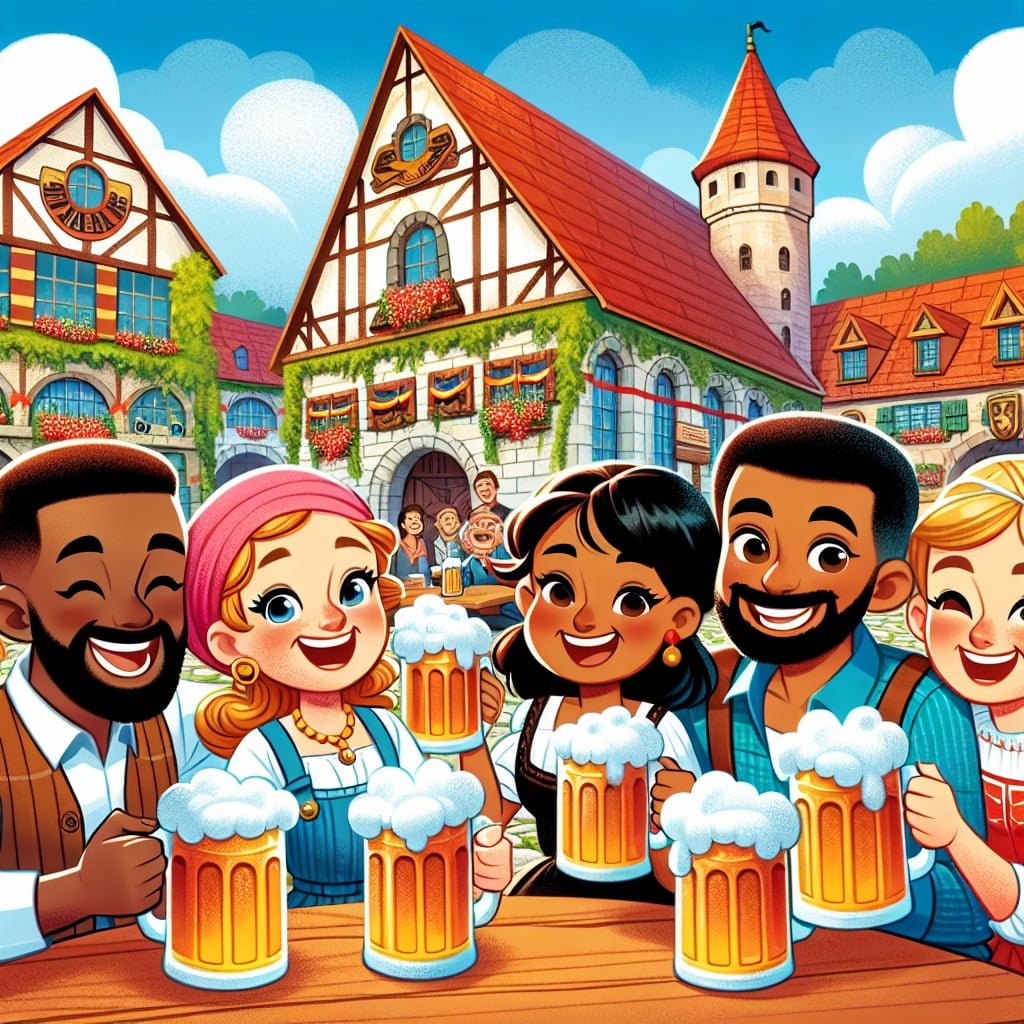
For younger kids: Germany makes yummy drinks called beer that adults like!
For older kids: The Weihenstephan Brewery in Bavaria, Germany, holds the title of the world’s oldest continuously operating brewery, with origins dating back to 1040.
Detailed explanation:Germany Facts For Kids
Germany is home to the oldest brewery in the world, which is located in the city of Munich. This historic brewery, known as Weihenstephan Brewery, has been in operation since the year 1040, making it over a thousand years old.
The Weihenstephan Brewery has a long and storied history, having survived wars, revolutions, and changes in the brewing industry. It has stayed true to its traditional brewing methods, using only the finest ingredients and following strict quality control measures to ensure that each batch of beer meets its high standards.
In addition to being the oldest brewery in the world, the Weihenstephan Brewery is also renowned for its innovation and commitment to sustainability. They have implemented cutting-edge technology to reduce their environmental impact, such as using renewable energy sources and recycling water in the brewing process.
Visitors to Munich can take a tour of the Weihenstephan Brewery to learn about the history of brewing in Germany and see firsthand how beer is made. They can also sample a variety of delicious beers, from traditional lagers to experimental brews.
In conclusion, the Weihenstephan Brewery in Germany is a fascinating and important landmark in the world of brewing. Its long history, commitment to quality, and dedication to sustainability make it a must-visit destination for beer lovers and history enthusiasts alike.
In summary, the Weihenstephan Brewery in Munich, Germany holds the Guinness World Record for being the oldest brewery in the world, making it a must-visit destination for beer enthusiasts and history buffs alike.
Germany Facts For Kids
3. The First Printed Book Was Made in Germany
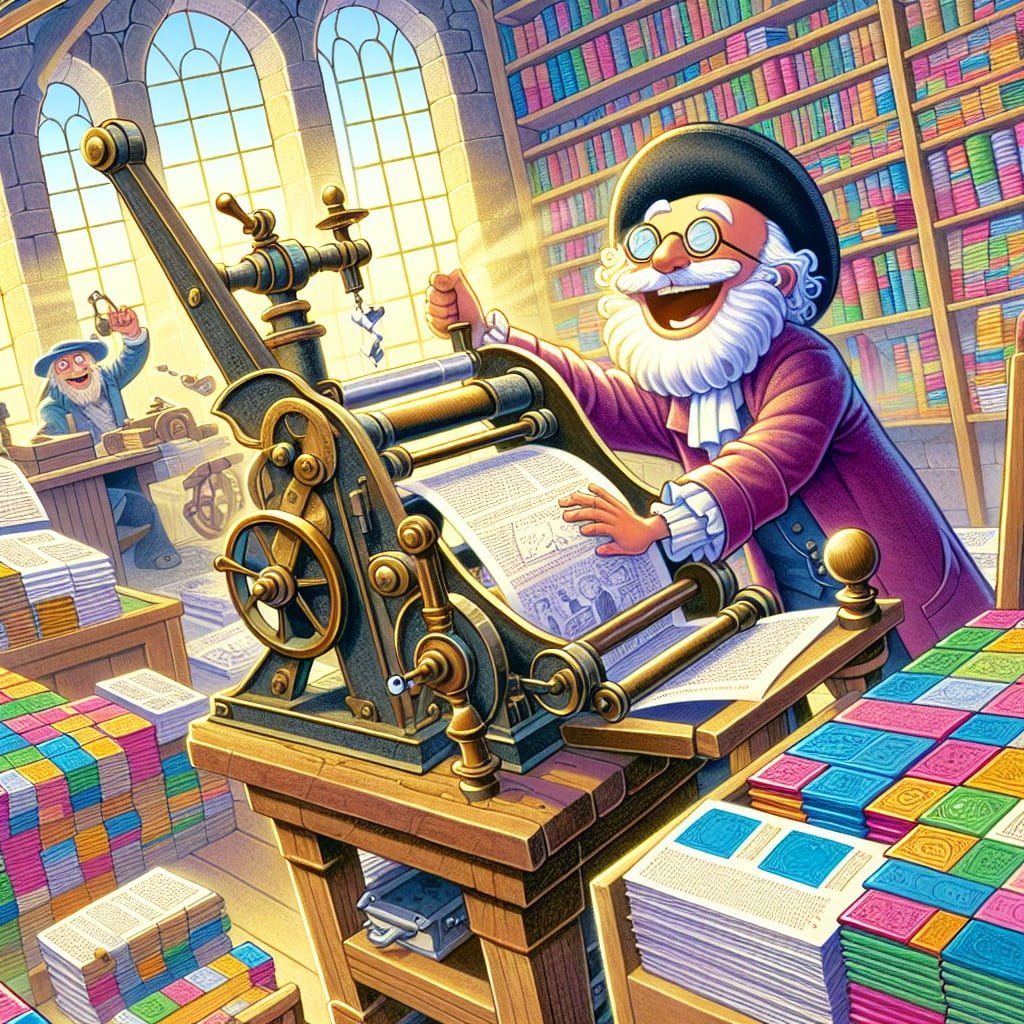
For younger kids: Germany was the first place with a special machine to make lots of books for people to read!
For older kids: Johannes Gutenberg, a German inventor, created the printing press around 1440 and printed the first book, the famous Gutenberg Bible, revolutionizing the spread of knowledge.
Detailed explanation:One of the most fascinating Germany Facts For Kids is that the first printed book in history was produced in Germany. This groundbreaking achievement took place in the 15th century, when Johannes Gutenberg invented the printing press. Prior to this invention, books were painstakingly copied by hand, making them extremely rare and expensive. Gutenberg’s printing press revolutionized the way information was disseminated, allowing for mass production of books for the first time.
The first book to be printed using Gutenberg’s press was the Gutenberg Bible, also known as the 42-line Bible. This impressive Bible was printed around 1455 and is considered a masterpiece of craftsmanship. It featured beautifully designed pages with intricate decorative elements, making it a prized possession for those lucky enough to own one.
The impact of the printing press cannot be overstated. It democratized knowledge and brought literacy to the masses. Books became more affordable and accessible, leading to an explosion of learning and innovation. The spread of ideas was accelerated, fueling the Renaissance and the Scientific Revolution.
Germany’s role in the history of printing is a source of national pride. The country continues to be a leader in the printing and publishing industries, with a strong tradition of craftsmanship and innovation. The legacy of Johannes Gutenberg lives on in every printed page, reminding us of the power of the written word to educate, inspire, and shape the world.
Germany Facts For Kids
4. Germany Has Around 25,000 Castles
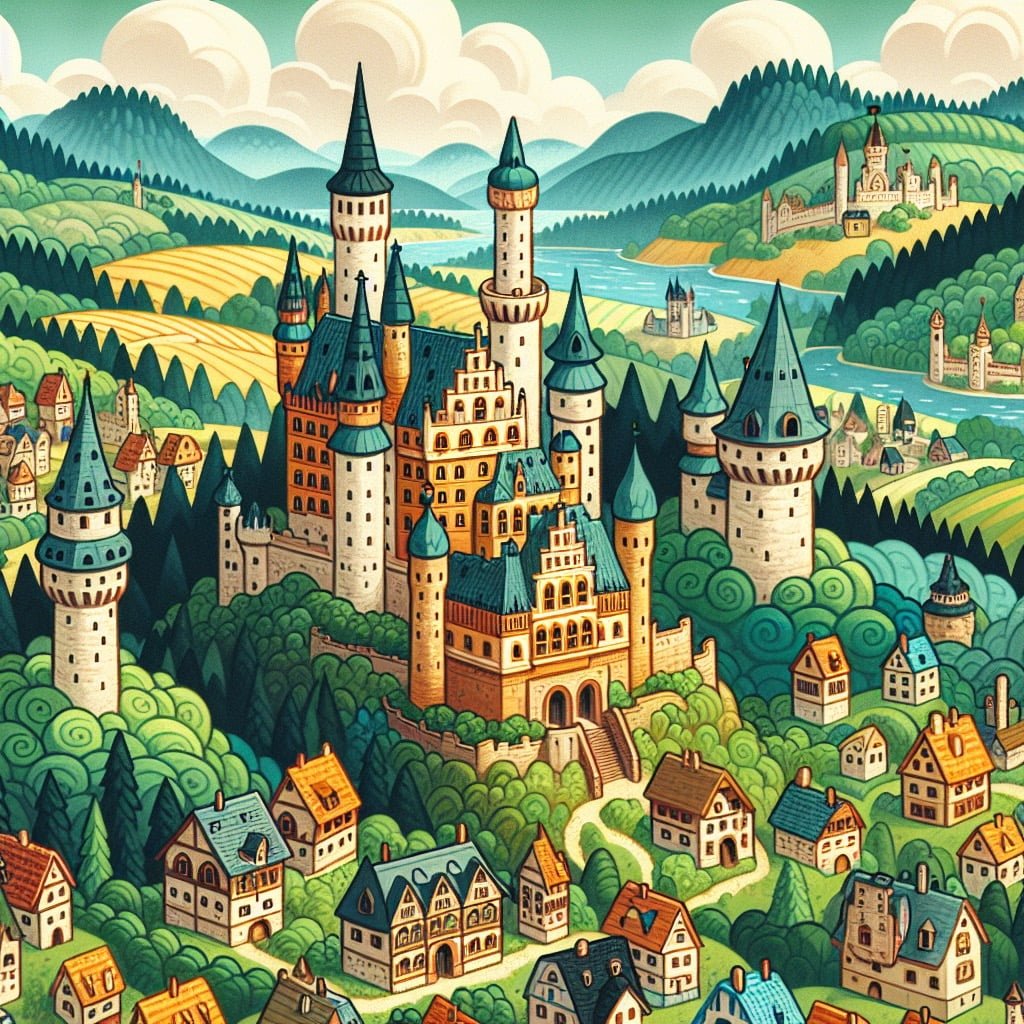
For younger kids: There are so many castles in Germany, like in fairy tales!
For older kids: Germany is home to approximately 25,000 castles, each with its own unique history and architecture. Many of these castles are open to the public for exploration.
Detailed explanation:When exploring Germany Facts For Kids, one interesting and fascinating fact to share is that Germany is home to approximately 25,000 castles. These majestic structures are not only a testament to the country’s rich history and cultural heritage but also serve as popular tourist attractions for visitors from around the world.
The abundance of castles in Germany can be traced back to the medieval era, where these fortified structures were built as a means of protection against invading forces. Over time, many of these castles were expanded and renovated to serve as royal residences or symbols of power and prestige for noble families.
Each castle in Germany has its own unique architectural style and historical significance, offering visitors a window into the past and a glimpse of the country’s diverse heritage. From the fairy-tale Neuschwanstein Castle perched on a hilltop in Bavaria to the imposing Wartburg Castle where Martin Luther translated the Bible, there is a wide range of castles to explore and admire throughout Germany.
In addition to their historical importance, many of these castles also host events, exhibitions, and tours for visitors to learn more about their past and experience the grandeur of these impressive structures firsthand. Whether you’re interested in medieval history, architecture, or simply enjoy exploring new places, Germany’s 25,000 castles offer something for everyone to enjoy and appreciate.
Overall, the abundance of castles in Germany is a true testament to the country’s rich cultural heritage and the importance of preserving these historical treasures for future generations to enjoy and learn from.
Germany Facts For Kids
5. The First Magazine was Published in Germany

For younger kids: Germany made the first magazine with stories and pictures!
For older kids: The first magazine, “Erbauliche Monaths Unterredungen,” was published in 1663 in Germany, setting the stage for the modern magazine industry.
Detailed explanation:Germany Facts For Kids may be interested to learn that the first magazine was published in Germany. Magazines are periodical publications that contain a variety of articles, photographs, and advertisements. They are different from newspapers in that they are usually published weekly or monthly and focus on a specific topic, such as fashion, health, or current events.
The first magazine, titled “Erbauliche Monaths-Unterredungen” (Edifying Monthly Discussions), was published in 1663 in Germany. This magazine was a collection of essays, poetry, and literary criticism aimed at educating and entertaining its readers. It set the stage for the many magazines that would follow, covering a wide range of topics and appealing to diverse audiences.
Magazines have played a significant role in shaping public opinion and disseminating information in Germany and around the world. They provide a platform for writers, photographers, and other creatives to showcase their work, as well as for advertisers to reach a targeted audience.
Today, magazines continue to be popular sources of entertainment and information for people of all ages. From glossy fashion magazines to niche publications focusing on specific hobbies or interests, there is a magazine for everyone. In Germany, there are a wide variety of magazines available, covering topics such as travel, food, science, and history.
In conclusion, Germany Facts For Kids may find it fascinating to learn that the first magazine was published in Germany. Magazines have a rich history and continue to be an important part of our media landscape today.
Germany Facts For Kids
6. Germany Has the World’s Largest Beer Festival
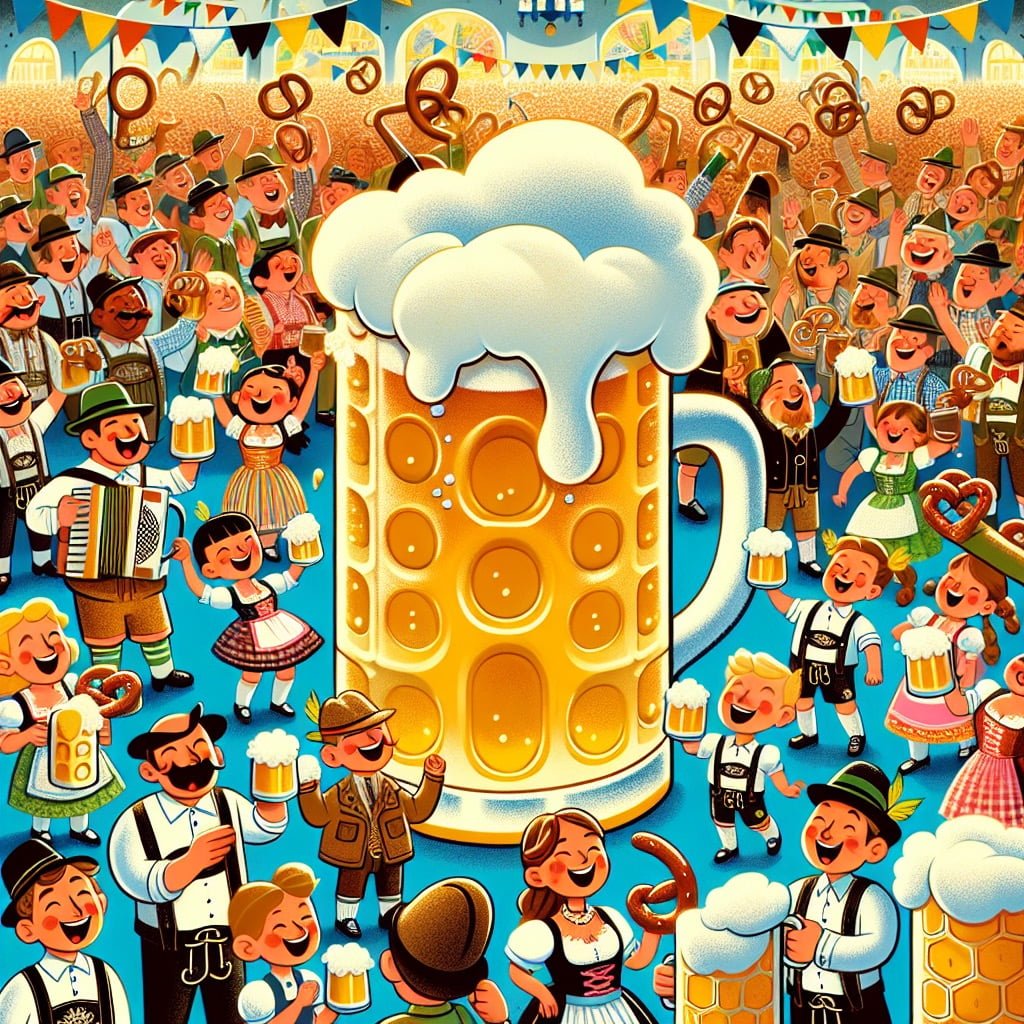
For younger kids: Germany has a huge party called Oktoberfest and everyone drinks root beer!
For older kids: Oktoberfest, held annually in Munich, is the world’s largest beer festival, attracting millions of visitors from around the globe to enjoy traditional German beer, food, and music.
Detailed explanation:Germany Facts For Kids: Germany is known for its rich history, culture, and traditions, and one of the most popular events that showcases all of these aspects is the Oktoberfest. Held annually in Munich, Oktoberfest is the world’s largest beer festival and attracts millions of visitors from around the globe.
The origins of Oktoberfest date back to October 12, 1810, when the festival was first held to celebrate the marriage of Prince Ludwig and Princess Therese of Saxony-Hildburghausen. The citizens of Munich were invited to join in the festivities, which included horse races, parades, music, and of course, plenty of beer. The event was such a success that it became an annual tradition, and over the years, Oktoberfest has grown into a massive celebration that lasts for over two weeks.
During Oktoberfest, visitors can enjoy a wide variety of traditional German foods, music, and entertainment, but the main attraction is the beer. Brewed according to strict regulations known as the German Beer Purity Law, or Reinheitsgebot, German beer is world-renowned for its quality and taste. Each year, over 6 million liters of beer are consumed at Oktoberfest, making it the largest beer festival in the world.
In addition to beer, Oktoberfest also features traditional Bavarian clothing, such as dirndls and lederhosen, as well as carnival rides and games. The festival has become a symbol of German culture and hospitality, attracting visitors of all ages and backgrounds. So, if you’re looking to experience the best of what Germany has to offer, be sure to visit Oktoberfest and join in the celebrations!
Germany Facts For Kids
7. Germany Has More than 1,500 Different Types of Sausages
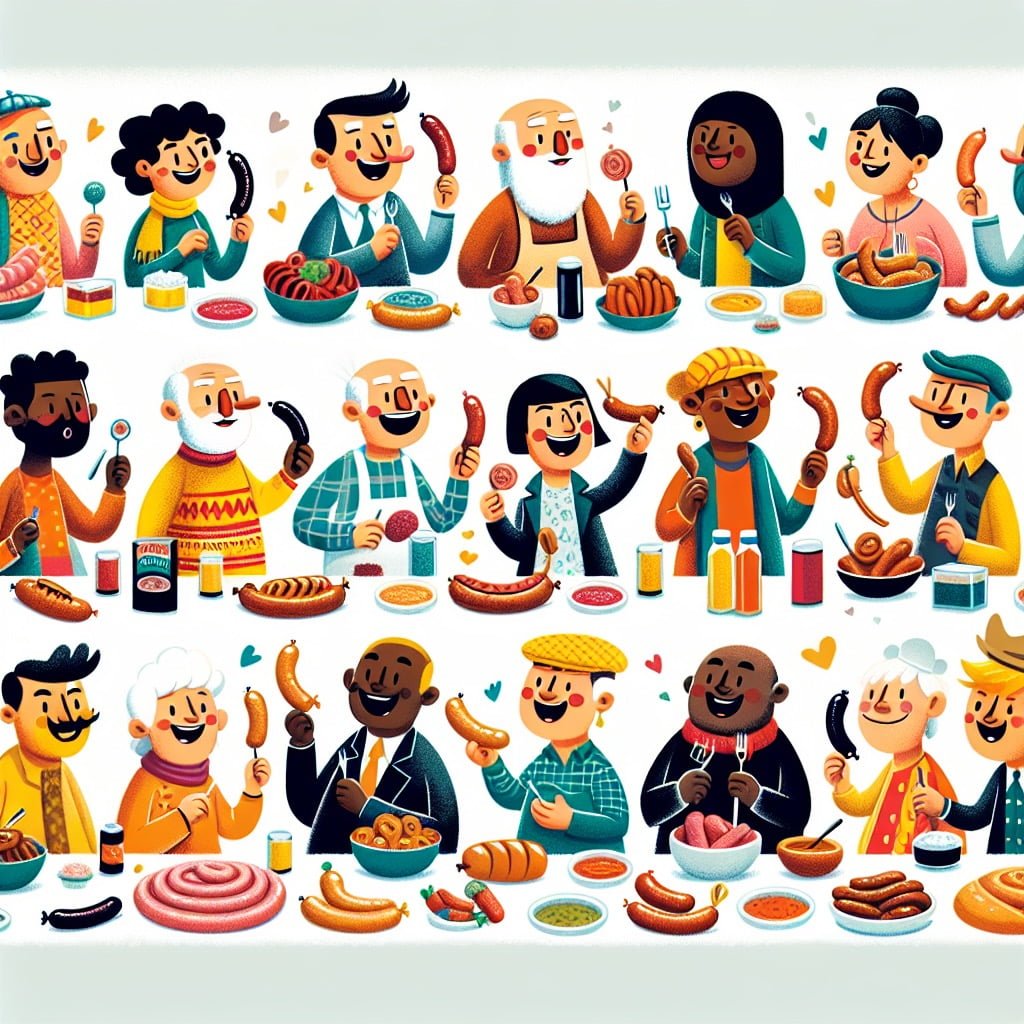
For younger kids: Germany has lots of yummy sausages for everyone to eat!
For older kids: With over 1,500 varieties of sausage, Germany is a paradise for sausage lovers, offering a wide range of flavors and types to satisfy every palate.
Detailed explanation:Germany Facts For Kids are fascinating, and one of the most delicious facts about Germany is that it is home to more than 1,500 different types of sausages. This culinary diversity is a reflection of Germany’s rich food culture and regional culinary traditions.
From the famous bratwurst to the spicy currywurst, each type of sausage has its own unique flavor profile and preparation method. Sausages are a staple in German cuisine, enjoyed at festivals, markets, and family gatherings. Each region of Germany has its own specialty sausage, showcasing the diversity of flavors and ingredients found throughout the country.
In addition to traditional pork sausages, Germany also boasts a variety of sausage made from beef, veal, chicken, and even game meats. Each type of meat brings its own unique taste and texture to the sausage, creating a wide range of options for sausage lovers to explore.
German sausages are typically enjoyed with a side of sauerkraut, potato salad, or bread, creating a hearty and satisfying meal. Whether grilled, fried, or boiled, German sausages are a versatile and delicious food that can be enjoyed in a variety of ways.
So, next time you find yourself in Germany, be sure to sample some of the more than 1,500 different types of sausages and experience the rich culinary heritage of this fascinating country. Germany Facts For Kids are not only educational but also delicious!
Germany Facts For Kids
8. The Christmas Tree Tradition Began in Germany
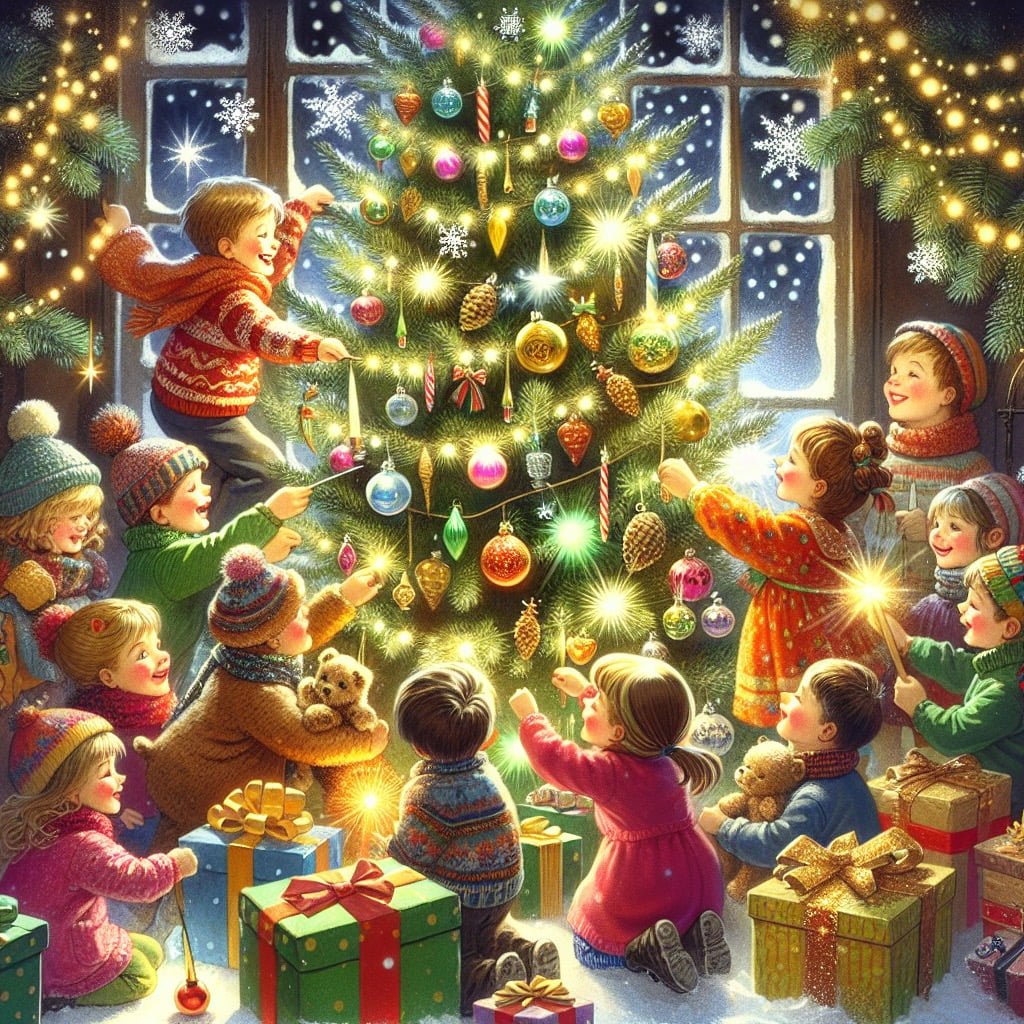
For younger kids: Germany started the tradition of decorating a big tree during Christmas!
For older kids: The Christmas tree tradition is believed to have originated in Germany in the 16th century, with people decorating evergreen trees as a symbol of hope and new life during the festive season.
Detailed explanation:The tradition of decorating Christmas trees originated in Germany and has since become a popular custom around the world. Germany Facts For Kids. The practice can be traced back to the 16th century when devout Christians brought decorated trees into their homes during the holiday season. The trees were adorned with fruits, nuts, and other symbolic decorations to represent the Tree of Knowledge in the Garden of Eden.
One of the most famous stories associated with the Christmas tree tradition in Germany is that of Martin Luther, the Protestant reformer. Legend has it that Luther was walking through a forest one winter evening and was struck by the beauty of the stars shining through the trees. He wanted to recreate this magical scene for his family, so he cut down a tree, brought it indoors, and decorated it with candles.
The tradition of the Christmas tree was popularized in Germany through various cultural influences, including the popularization of the Christmas tree by Queen Victoria and Prince Albert in England in the 19th century. The tradition quickly spread to other European countries and eventually made its way to the United States and beyond.
Today, the Christmas tree is a central symbol of the holiday season, with millions of trees being decorated and displayed in homes, public spaces, and businesses around the world. The tradition of the Christmas tree continues to be celebrated in Germany, where it holds a special place in the hearts of many as a symbol of hope, joy, and the spirit of giving. Germany Facts For Kids.
Germany Facts For Kids
9. Germany Has More than 150 Autobahns Without Speed Limits
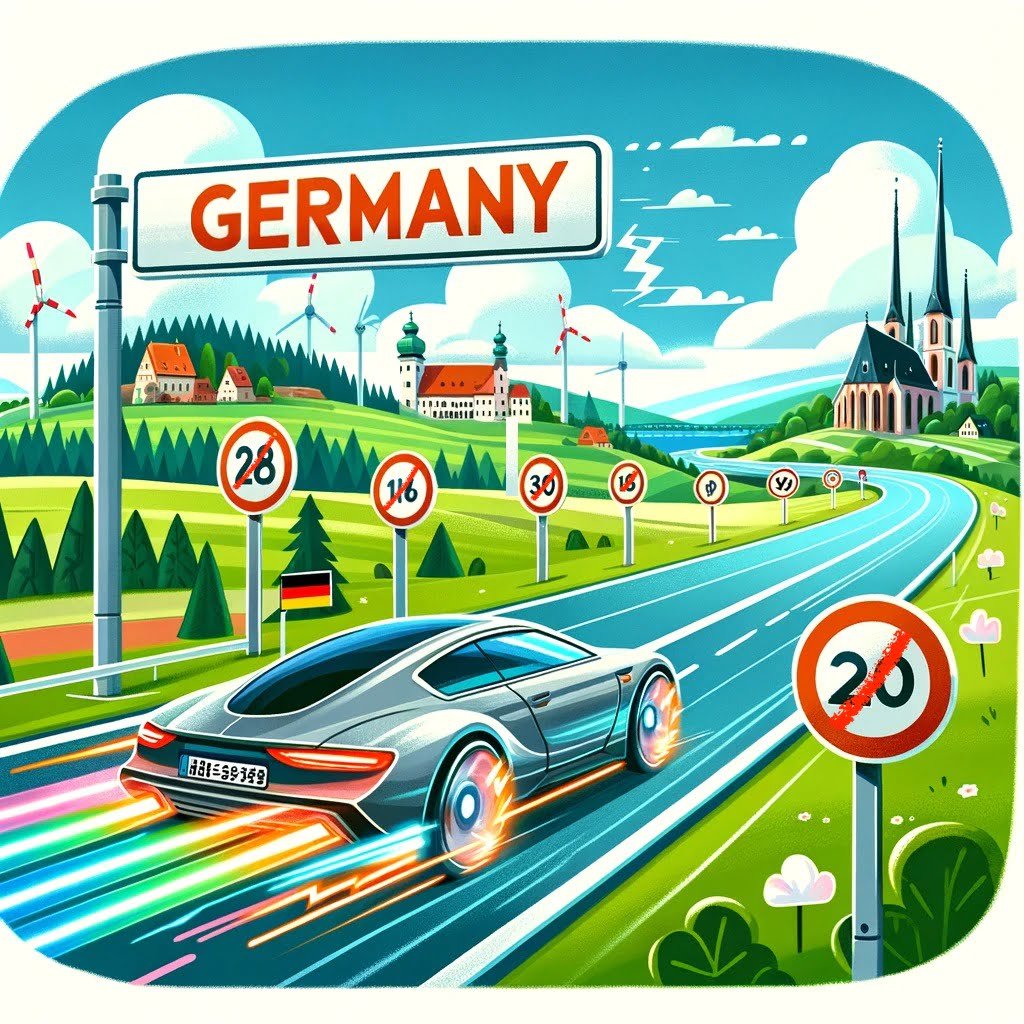
For younger kids: Germany has special roads where cars can drive super fast!
For older kids: Germany is known for its extensive autobahn network, with over 150 stretches having no speed limit, allowing drivers to experience the thrill of high-speed travel.
Detailed explanation:Germany is famous for its Autobahn network, which consists of more than 150 highways that do not have a set speed limit. This unique feature of the German road system has captured the imagination of many people around the world, leading to a lot of curiosity and interest in Germany Facts For Kids.
The Autobahn system in Germany is known for its well-maintained roads and efficient traffic flow. While most highways in other countries have speed limits that vary between 60 and 80 miles per hour, the Autobahns allow drivers to travel at speeds that are deemed safe for the conditions. This means that drivers can legally drive at speeds well over 100 miles per hour on certain stretches of these highways.
Despite the absence of a general speed limit on the Autobahns, drivers are still expected to exercise caution and follow the rules of the road. Speed limits are enforced in certain areas, such as construction zones or sections with high accident rates. Additionally, reckless driving or exceeding safe speeds can still result in fines or penalties for drivers.
The Autobahn system is a symbol of German engineering prowess and efficiency. It has become a key aspect of Germany Facts For Kids, showcasing the country’s commitment to innovation and technological advancement. The Autobahns not only facilitate fast and convenient travel across the country, but also serve as a source of national pride for many Germans. So, the next time you find yourself driving on one of Germany’s Autobahns, remember to enjoy the experience while also staying safe and respecting the rules of the road.
Germany Facts For Kids
10. Gummi Bears Were Invented in Germany
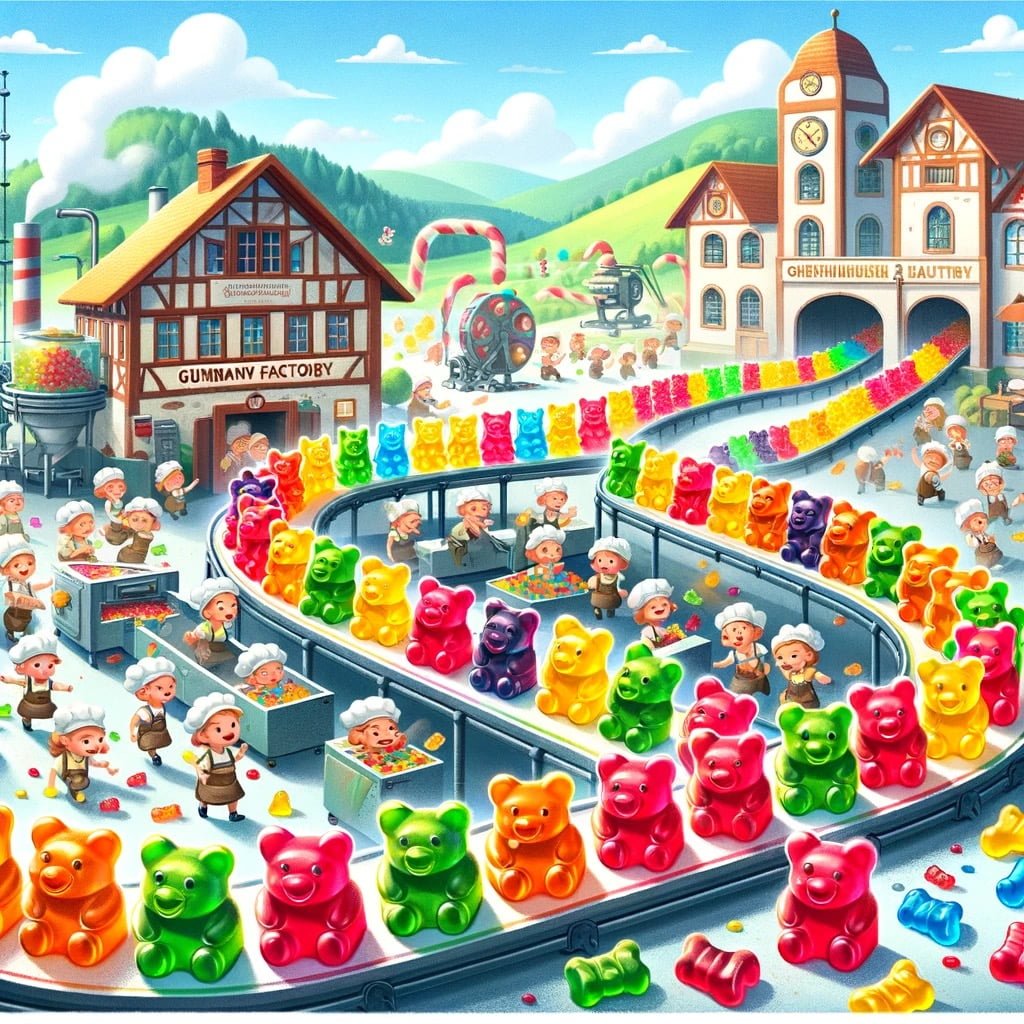
For younger kids: Germany made the first yummy gummy bears for candy lovers!
For older kids: The popular candy, gummi bears, was invented in Germany in 1922 by Hans Riegel, and it quickly became a beloved treat worldwide.
Detailed explanation:One interesting Germany Fact For Kids is that Gummi Bears were actually invented in Germany. The popular chewy candy was created by Hans Riegel Sr., a confectioner from Bonn, Germany, in the 1920s. Riegel was the founder of the Haribo company, which produced the first gummi bears.
The invention of gummi bears revolutionized the candy industry. These adorable, bear-shaped sweets quickly gained popularity for their unique texture and fruity flavors. The original gummi bears were made from a mixture of sugar, glucose syrup, gelatin, citric acid, and various fruit flavors. They were also dusted with a light coating of powdered sugar to prevent sticking.
The name “gummi” comes from the gelatin used to make the candy, which gives it its chewy texture. Gummi bears are now enjoyed by people of all ages around the world and come in a variety of flavors and colors. They have become a staple treat in many households and are often associated with childhood nostalgia.
In addition to being delicious, gummi bears also have a fascinating history. They have been featured in movies, TV shows, and even video games. The iconic candy has stood the test of time and remains a beloved snack for kids and adults alike.
In conclusion, the invention of gummi bears in Germany by Hans Riegel Sr. is a fun and tasty Germany Fact For Kids that highlights the country’s rich history of confectionery innovation. These chewy candies continue to delight people of all ages and are a sweet reminder of the creativity and ingenuity of German candy makers.
Did You Know?
The first printed magazine, first Christmas tree, first book, and first brewery – Germany has given the world many wonderful inventions and traditions!
‘Germany Facts For Kids’
As an expert in popular science, I have delved deep into the fascinating world of Germany and its rich history, culture, and innovations. In my latest blog post, I have compiled a collection of interesting and engaging Germany facts specifically tailored for kids.
From medieval castles to modern technological advancements, Germany has significantly influenced the world we live in today. By exploring the famous Germans such as Albert Einstein, Johann Sebastian Bach, and Marie Curie, kids can gain a greater appreciation for the country’s contributions to science, music, and more.
But it’s not just about history – Germany’s vibrant culture, delicious cuisine, and reputation for innovation make it an exciting country to learn about. By uncovering fun facts about Germany, kids can embark on a journey of discovery that will broaden their horizons and inspire a sense of wonder and curiosity.
So, if you’re looking for an educational and entertaining read that will spark your child’s interest in the world around them, be sure to check out my blog post on Germany Facts For Kids. It’s a great way to instill a love of learning and exploration in young minds!
Sources and additional information for Germany Facts For Kids
WikipediaBritannicaCIA World FactbookCentral Intelligence Agency (CIA)The World BankUnited Nations Children’s Fund (UNICEF)BBC NewsLonely PlanetCouncil on Foreign RelationsThe World Factbook (CIA)United NationsBBC Country ProfilesLonely PlanetThe World Bank CountriesUNESCO World Heritage CentreCountryReportsGlobalEdge (Michigan State University)Transparency International – The Global Corruption Barometer
